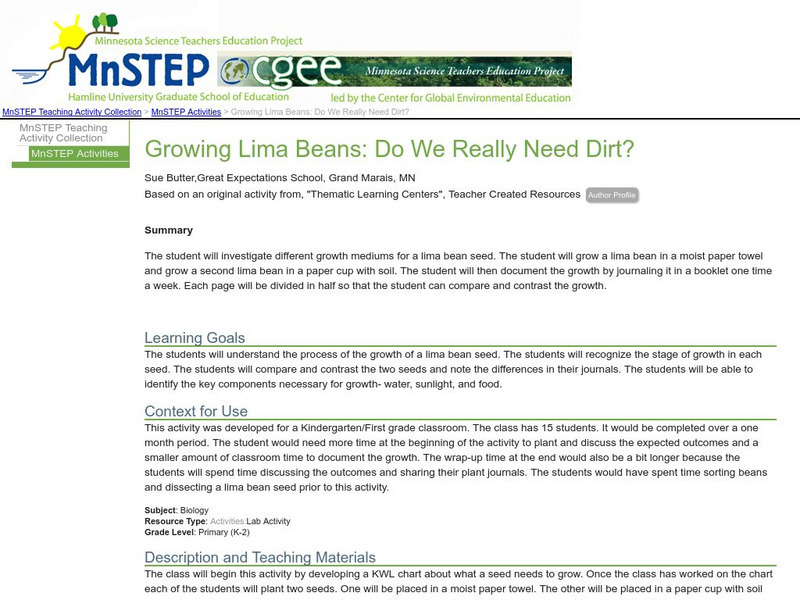Curated OER
GEOGRAPHY OF FOOD & FIBER
Students will explain the ways geography determines the crops grown in the United States and other countries, and the resulting trade relationships.1. Discuss trade routes, both ancient and current. Discuss why the most direct route from...
Curated OER
Cinco De Mayo Vocabulary "Quiz"
In this Cinco De Mayo vocabulary worksheet, students match vocabulary words on the left with definitions on the right. Worksheet includes a link to additional activities.
Science Buddies
Science Buddies: Tough Beans: Which Cooking Liquids Slow Softening the Most?
Beans are important to the diets of many people, that is why you always find it cooked a specific way or in a specific dish in different cultures. Here you will learn how the liquid that beans are cooked in affects how quickly or slowly...
Science Education Resource Center at Carleton College
Serc: Growing Lima Beans: Do We Really Need Dirt?
Students investigate different growth mediums for a lima bean seed: a wet paper towel and a paper cup with soil.
Precision Nutrition
Encyclopedia of Food: Inca Seeds
Commonly called Inca peanuts, these seeds are native to Peru. Find their nutritional value, how to select them, and a tasty fudge recipe using them.
TOPS Learning Systems
Tops Learning Systems: Top Science: Monocots/dicots [Pdf]
Grow corn and bean seeds and measure their comparative growth over time.
California State University
Bean and Seed Mosaic
This lesson plan offers an alternative to generic torn/cut paper mosaics by using beans and seeds. Introduce Mexican culture and have your students practice the elements of line, shape, and color.
US Department of Agriculture
Choose My Plate: All About the Protein Group
Read about the foods that qualify as proteins and how much amounts to one serving of each.
Smithsonian Institution
National Museum of Natural History: American Mammals: Northern Pygmy Mouse
Northern Pygmy Mice are the smallest rodents in North America. They live in a variety of habitats where there is dense ground cover and eat grass seeds and leaves, prickly pear cactus fruit and stems, mesquite beans, and granjeno berries...
Other popular searches
- Growing Bean Seeds
- Lima Bean Seeds
- Soaking Lima Bean Seeds
- Planting Bean Seeds
- Growing Lima Bean Seeds
- Growing Bean Seeds Pea
- Biology Bean Seeds
- Pictures on Bean Seeds
- Variation Bean Seeds
- Seeds and Bean Mosaic
- Apple and Bean Seeds
- Lima Bean Seeds Stages







